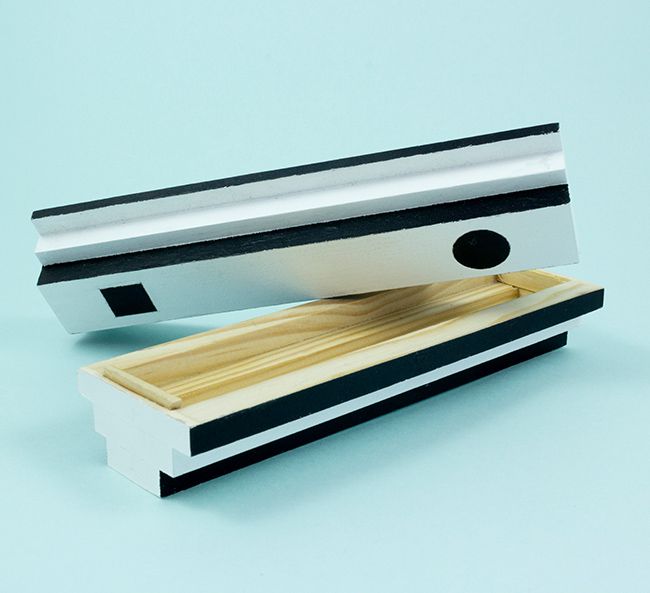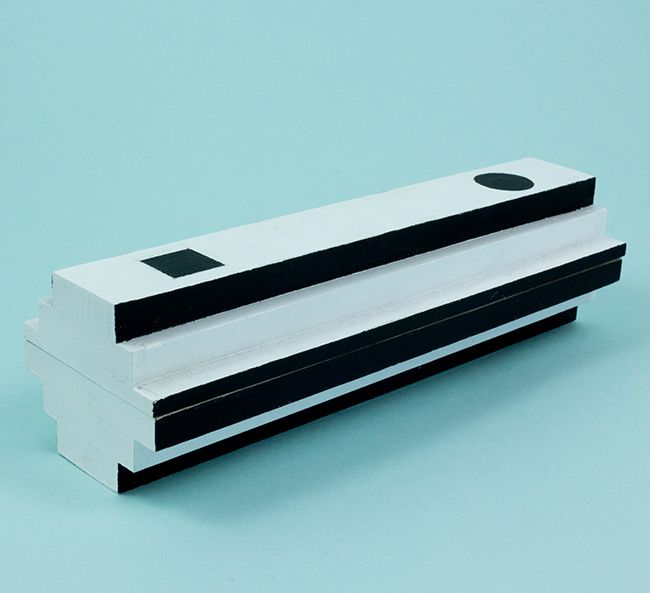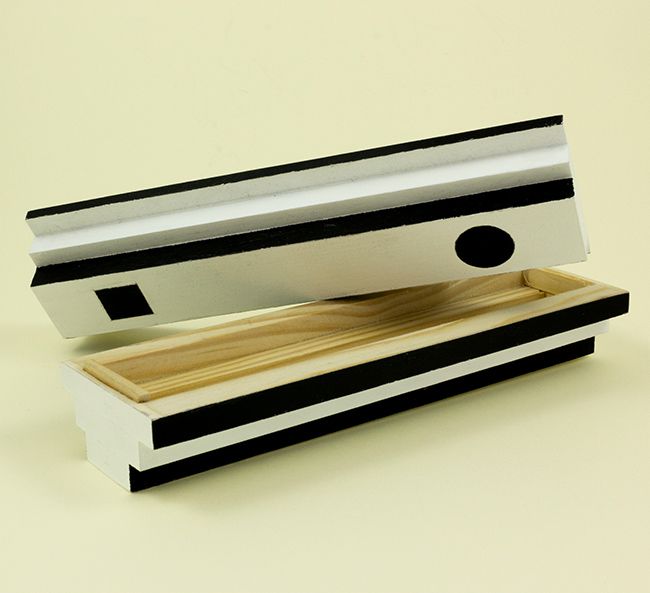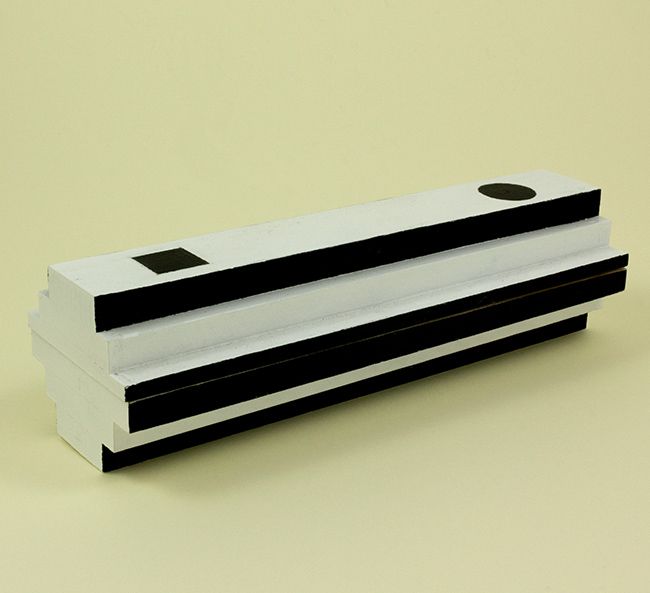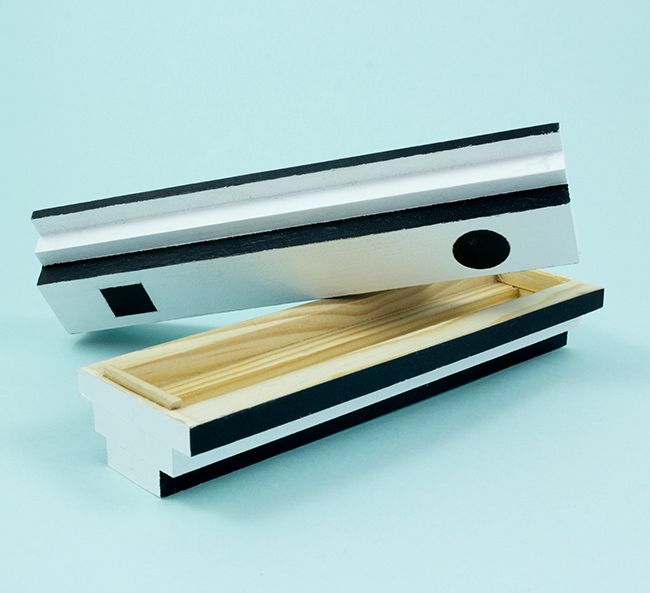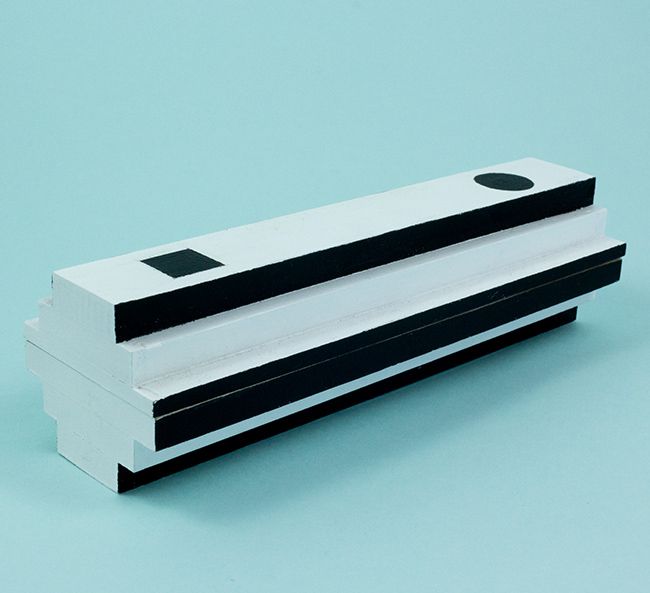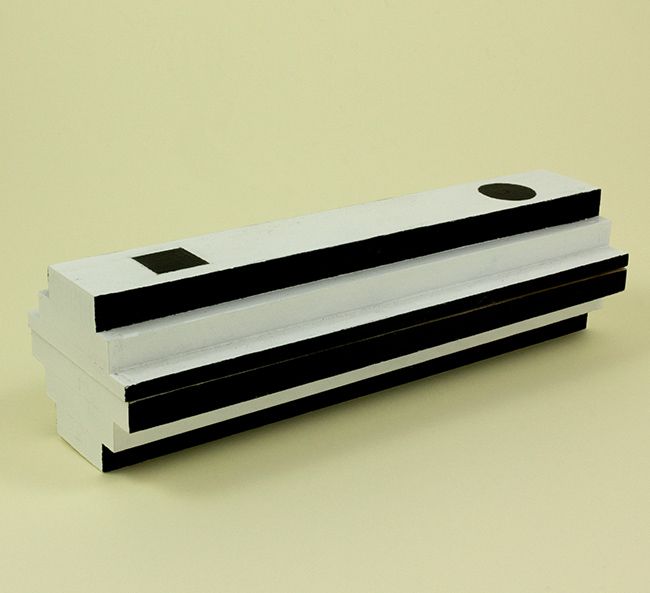beamalevich
Suetin: Malevich's coffin
Couldn't load pickup availability
Although Malevich had wished to have one of his architectons installed on top of his coffin before procession and burial in his selected spot in the outskirts of Nemchinovka – just outside Moscow -, it was his fellow Suprematist artist and friend Nikolai Suetin who designed what would indeed become the last mortuary carriage and Kazimir's final deathbed before incineration and further rituals. The “Suetin Coffin”, as the box would be called for the rest of history, accompanied the last memories of those who witnessed the acts of that May 15th of 1935, which finished by an oak tree, underground, by the little town of his choice.
This rendition to the Suetin’s ouvre – also referred to as the Malevich coffin -, adapted though to domestic dimensions, is entirely made of wood loyally stacked in layers to resemble the original creation. A coat of white paint imitates the original design, with black stripes on the sides, and a painted black square and a black circle on the top part of the piece end the characterization (see in pictures).
The coffin structure has two wood notches on its inside that function as a buffer stop.
Design thought by Beamalevich and handmade by Barcelona cabinetmakers in single units, all different from each other.
Layered wood parts. The coffin comes mounted as seen on the picture. It resembles a case.
Due to the nature of the product, we were not sure initially whether it would be worth replicating. But following both our passion and the current lack of a rendition to this particular item, we let ourselves be pulled by the force of art into its tailor making.
SPECIFICATIONS
Dimensions:
Length: 17.7 cm // 7 in
Width: 5.2 cm // 2 in
Height: 4.8 cm // 1.9 in
Weight:
124 g // 0.27 lb // 4.4 oz
Materials: precise cut wood, black paint, white paint
Characteristics:
Hollow inside allows to storage of items of small size such as short stationery objects, a fountain pen, jewellery or anything fitting in a hand case.
Buffer stops make the product maintain its original display and precise closing edges.
Painted like the original Malevich coffin.
--
When Kazimir Malevich died in 1935, a huge mourning procession took over the streets of Saint Petersburg – then Leningrad - to offer their rendition to the passing artist. He had succumbed to cancer at the age of fifty-seven already as a living legend and as one of the most relevant artistic contributors of Russia of his and of all times.
Along that announced ceremony – entirely funded by the city’s council -, Malevich’s corpse was carried inside a flamboyant and angular coffin decorated with motifs of his own style. It was made of wood, painted in white with a black square and circle, and took the streets entirely surrounded by Suprematist decoration, carried on the shoulders of his closest friends and disciples.
Nikolai Suetin designed the mortuary carriage where the body of Kazimir Malevich would be transported for the last time. The “Suetin Coffin”, entirely decorated in Suprematist motifs, is key protagonist of the last worldly hours of the prolific Russian master artist and will stay so forever. In the end, an artistic movement died that day as well.
Nikolai Suetin (1897 – 1954), one of the greatest Suprematism artists after its founder, was a graphic designer, ceramics painter and designer who studied under Kazimir Malevich at the Vitebsk Higher Institute of Art. He participated in the UNOVIS moviment, took part in the biggest Avant-Garde exhibitions of his time, and even designed and decorated the Soviet fair stand for the Exposition Internationale des Arts Décoratifs et Industriels Modernes celebrated in Paris in 1925. During most of the 1920s and 1930s, Suetin worked in porcelain production plants, had several positions in institutions related to art, illustrated books and designed exhibitions, and took over the responsability of representing the USSR in International fairs and exhibits, timely needing to adapt his artistic language from the ground-breaking Suprematism to more conventional and traditional decorative styles more in line with the totalitarian Stalinist regime that ruled Russia at the time.
